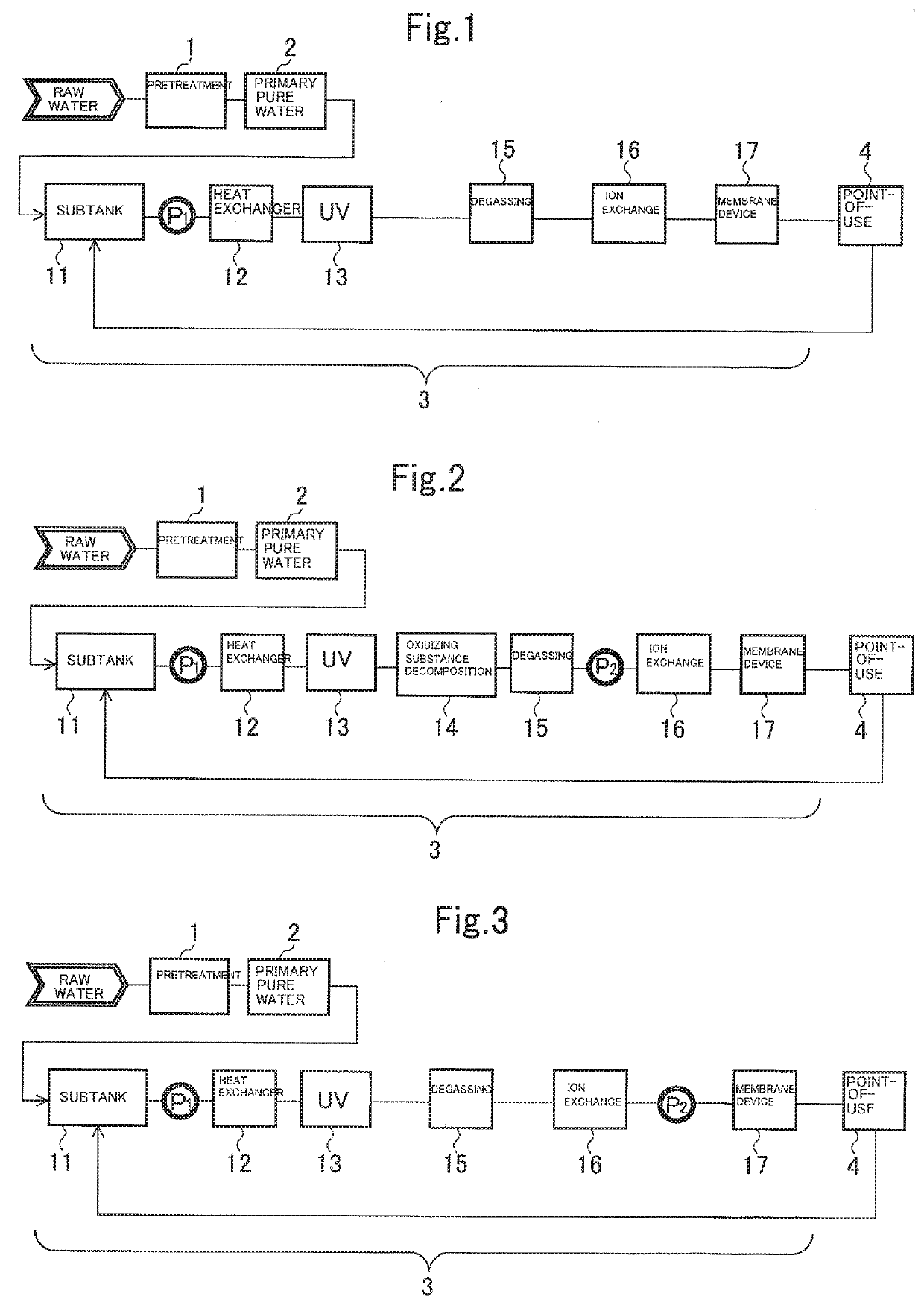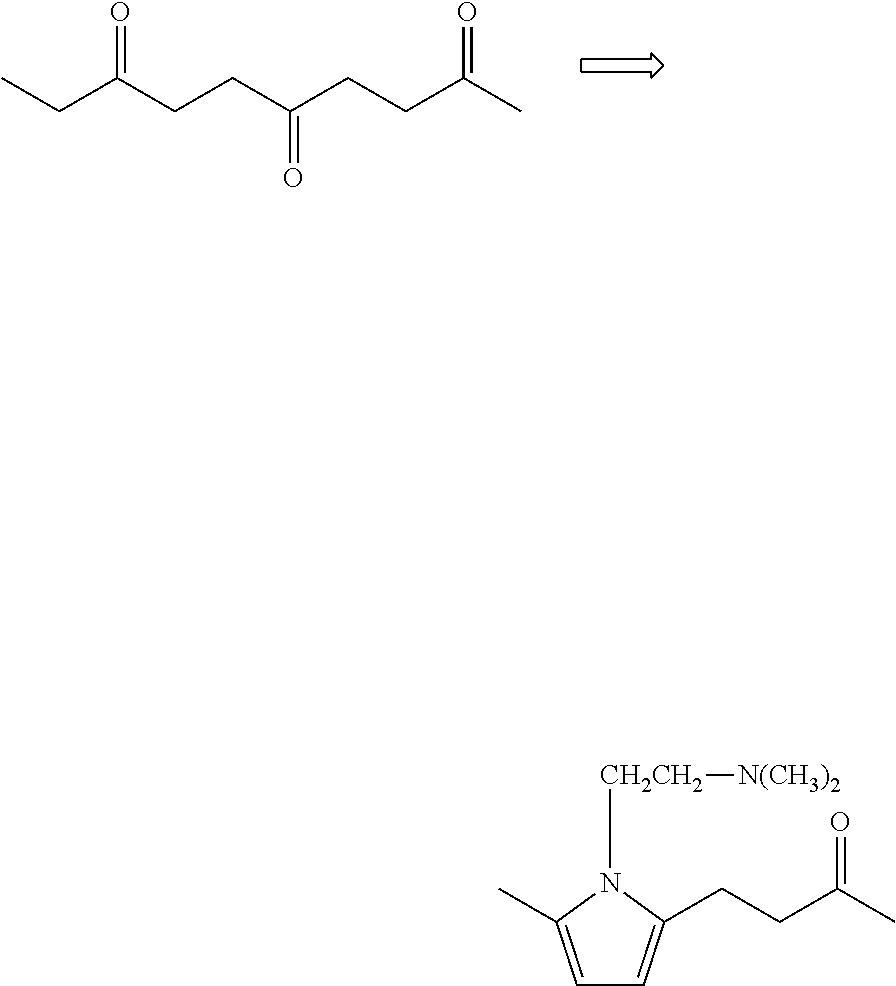Ultrapure-water production system
- Summary
- Abstract
- Description
- Claims
- Application Information
AI Technical Summary
Benefits of technology
Problems solved by technology
Method used
Image
Examples
example 1
[0097]The system illustrated in FIG. 1 was used. Water that had been passed through a mixed-bed ion-exchange device in order to reduce the number of microparticles present in the water was used as feed to a microparticle removal membrane device. The number of microparticles having a size of 20 nm or more present in the feed, which was measured by a 60-minute moving average method with an online particle monitor Ultra-DI20 produced by Particle Measuring Systems, was 1,000 particles±20% / mL. The feed was passed into the microparticle removal membrane device at 16.6 L / min and treated in the device. The recovery rate was set to 100%. The microparticle removal membrane device was operated in a dead-end filtration mode to produce membrane permeate.
[0098]The filtration membrane included in the microparticle removal membrane device 17 was an ultrafiltration membrane (UF membrane) that was an outside-in hollow fiber membrane having the following properties: material: polysulfone, average pore...
example 2
[0101]The measurement was made as in Example 1, except that the microparticle removal membrane used in Example 1 was changed to a filtration membrane in which the average number of pores formed in the surface of the hollow fiber membrane was 1.3E13 pores / m2. Table 2 summarizes the results.
example 3
[0102]The measurement was made as in Example 1, except that the microparticle removal membrane used in Example 1 was changed to a filtration membrane in which the average number of pores formed in the surface of the hollow fiber membrane was 6.4E13 pores / m2. Table 2 summarizes the results.
PUM
 Login to View More
Login to View More Abstract
Description
Claims
Application Information
 Login to View More
Login to View More - R&D
- Intellectual Property
- Life Sciences
- Materials
- Tech Scout
- Unparalleled Data Quality
- Higher Quality Content
- 60% Fewer Hallucinations
Browse by: Latest US Patents, China's latest patents, Technical Efficacy Thesaurus, Application Domain, Technology Topic, Popular Technical Reports.
© 2025 PatSnap. All rights reserved.Legal|Privacy policy|Modern Slavery Act Transparency Statement|Sitemap|About US| Contact US: help@patsnap.com


